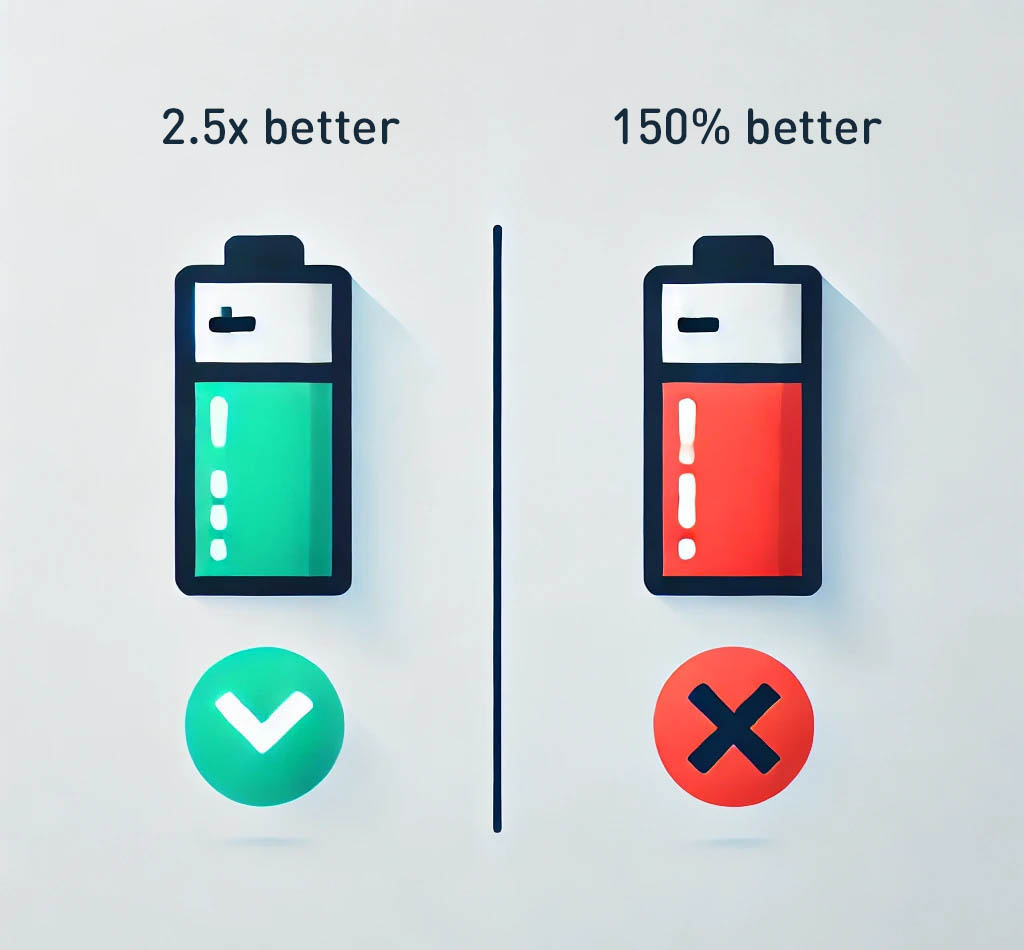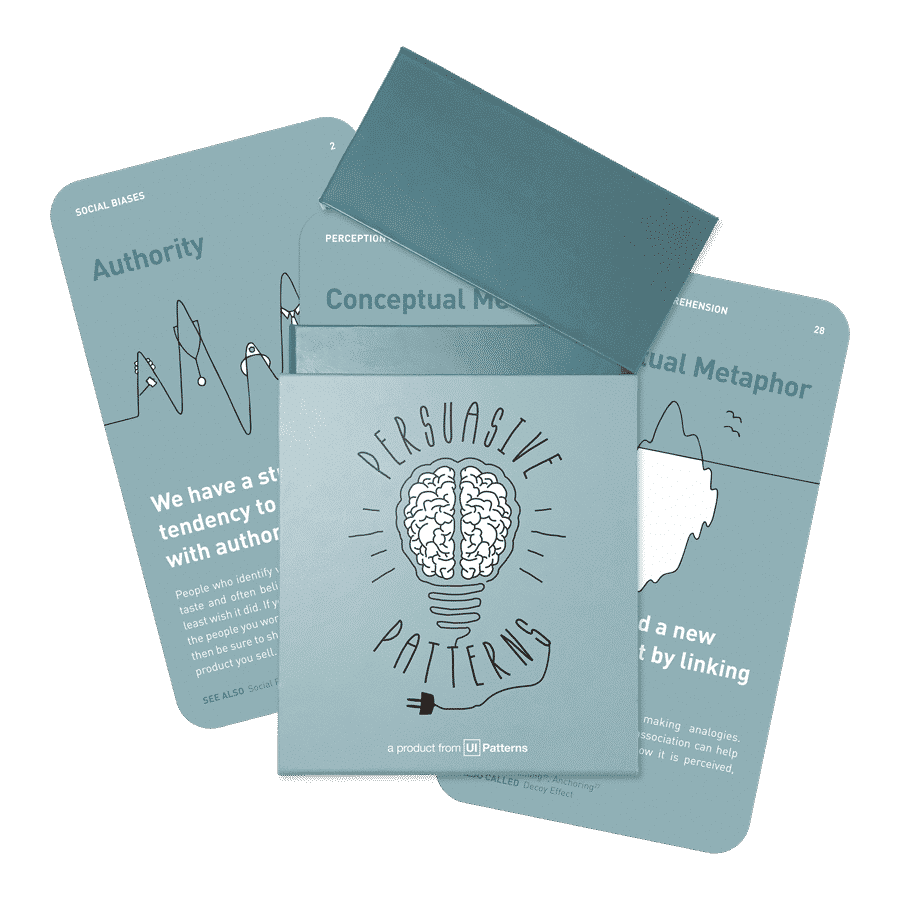The Off-by-100% Bias: Why numbers don't always tell the truth
We underestimate large percentage increases. Use clear language and context to avoid confusion.
Design for behavior change with the Persuasive Patterns card deck
Apply psychological principles to influence decisions, increase engagement, and optimize user experience.
Get your deck!Have you ever seen a product advertised as being “150% more effective”? It sounds impressive, doesn’t it? But did you know that many people actually underestimate the magnitude of such a percentage increase? This phenomenon, known as the “Off-by-100% Bias,” can have significant implications for marketing and consumer behavior.

The Off-by-100% Bias refers to our tendency to underestimate the size of percentage changes that are greater than 100%. In simpler terms, when we see a product that’s claimed to be 150% better, our minds often don’t fully grasp the extent of that improvement. This can lead to missed opportunities for businesses and suboptimal decision-making for consumers.
Why Does This Happen?
There are a few reasons why we might fall victim to the Off-by-100% Bias:
- Anchoring. We often anchor our judgments on the initial value. So, if a product is initially priced at $100 and is then advertised as being 150% more effective, we might anchor on the $100 price and underestimate the actual increase in value.
- Cognitive Fluency. Large percentages can be more cognitively demanding to process. Our brains might take a shortcut and underestimate the magnitude of the change to simplify the information.
- Reference Points. Our understanding of percentages is often influenced by our personal experiences and reference points. If we’re not familiar with a particular product or industry, we might have a harder time accurately assessing percentage claims.
The Off-by-100% Bias can have a significant impact on consumer behavior. When we underestimate the magnitude of percentage increases, we might be less likely to perceive a product as being a worthwhile investment. This can lead to missed sales opportunities for businesses and suboptimal choices for consumers.
A Case Study: The Off-by-100% Bias Experiment
To better understand the Off-by-100% Bias, researchers conducted a series of experiments. In one experiment, participants were asked to estimate the size of different percentage increases. They were presented with scenarios such as “A product is 150% more effective” or “A price has increased by 200%.”
The results were surprising: Participants consistently underestimated the magnitude of percentage increases greater than 100%. For example, they often perceived a 150% increase as being closer to 50% or 75%.
Experiment Details:
- Study: Fisher, M., & Mormann, M. (2023). The Off by 100% Bias: The Effects of Percentage Changes Greater than 100% on Magnitude Judgments and Consumer Choice. Journal of Consumer Research, 50(3), 367–381.
- Participants: A group of individuals from various backgrounds.
- Procedure: Participants were presented with different scenarios involving percentage increases and asked to estimate the magnitude of the change.
- Findings: Participants consistently underestimated the size of percentage increases greater than 100%.
Designing with the Off by 100% Bias
Understanding the Off-by-100% Bias can help designers and marketers improve their communication strategies. Here are a few tips:
- Use clear and concise language: Avoid using overly complex language or jargon that might confuse consumers.
- Provide context: Give consumers a reference point to help them better understand the magnitude of percentage increases. For example, you could say “Our product is 150% more effective than the leading competitor.”
- Use visual aids: Graphs, charts, or other visual aids can help consumers visualize the magnitude of percentage changes.
- The Off by 100% Bias: The Effects of Percentage Changes Greater than 100% on Magnitude Judgments and Consumer Choice by Fisher, M., & Mormann, M.

